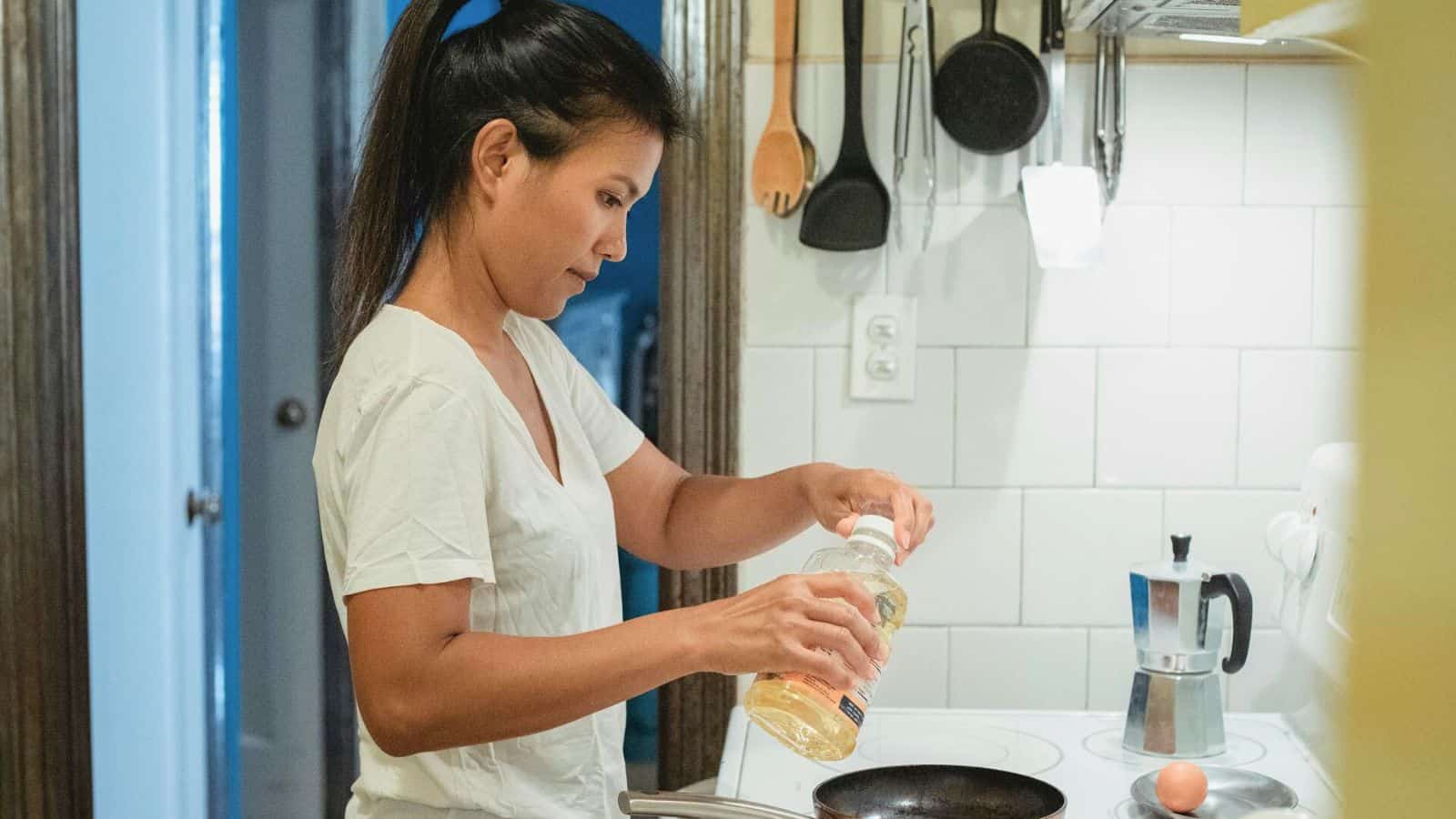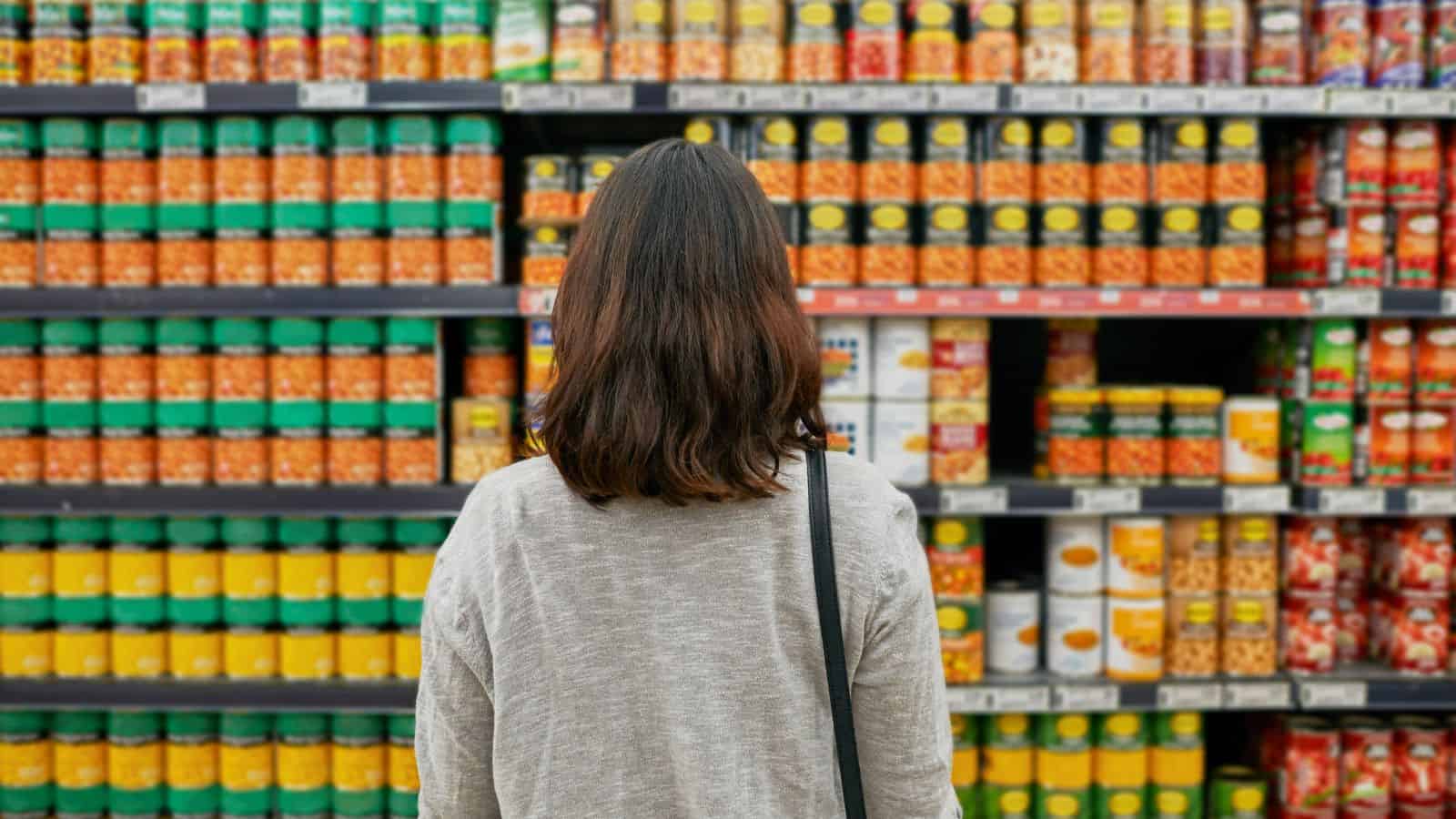Ever feel like your grocery bill is creeping up every time you shop? You're not alone. Prices are climbing, and it’s starting to hit where it hurts: our wallets. We all have those go-to items we grab without thinking, but these 15 common grocery foods are getting too expensive. Frustrating, we know!
What’s going on? Various factors are at play, from supply chain hiccups to rising production costs. Weather issues, labor shortages, and increased demand are just a few of the reasons behind these price hikes. It’s not just luxury items either; everyday essentials are getting more expensive. It feels like no matter how carefully you plan, you’re still spending more than you used to.
So, what can you do about it? Being aware of these changes is the first step. By understanding why prices are rising, you can make smarter choices and maybe even find some budget-friendly alternatives. Let's get into why some everyday items are becoming too expensive to buy.

Butter

Butter prices have risen due to increased costs of its primary ingredient, milk. The dairy industry has faced challenges such as higher feed prices, labor shortages, and transportation costs, which have all contributed to the rising cost of butter production. Additionally, fluctuations in global demand and trade policies have impacted market prices. Environmental factors, such as droughts and extreme weather conditions, have also affected the availability of feed and water for dairy cows, further driving up costs. These factors have combined to make butter more expensive for consumers, impacting their ability to purchase this essential kitchen staple.
Cooking Oil

Cooking oils, including olive oil and vegetable oil, have seen price increases due to several factors. Poor harvests of oil-producing crops, such as olives and soybeans, have reduced supply. Increased costs of agricultural inputs, like fertilizers and pesticides, have driven up production expenses. Additionally, higher transportation and energy costs have impacted production and distribution. Global demand fluctuations and trade policies have further influenced market prices. These combined factors have led to higher prices for cooking oils, making it more expensive for consumers to purchase these essential kitchen items.
Pasta

Pasta has become more expensive due to rising costs of its primary ingredient, wheat. Poor wheat harvests caused by extreme weather conditions have reduced supply, driving up prices. Additionally, higher transportation and energy costs have impacted the production and distribution of pasta. Labor shortages in the food manufacturing sector have also contributed to increased costs. Global supply chain disruptions and fluctuations in demand have further influenced market prices. These combined factors have led to higher prices for pasta, affecting consumers' ability to purchase this versatile and commonly used pantry staple.
Rice

Rice prices have seen an uptick due to various global factors. Climate change and extreme weather events have affected rice production in key growing regions, reducing yields. Increased costs of fertilizers and other agricultural inputs have driven up production expenses. Labor shortages and disruptions in the supply chain have further impacted the availability and cost of rice. Additionally, fluctuations in global demand and trade policies have influenced market prices. These factors have led to higher prices for rice, making it more expensive for consumers to include this staple grain in their diets.
Fresh Fruits

Fresh fruits, such as apples and bananas, have become more expensive due to a combination of factors. Extreme weather conditions, including droughts and storms, have affected crop yields, reducing supply. Increased transportation costs, driven by higher fuel prices, have also played a significant role. Labor shortages in the agricultural sector have further impacted harvesting and distribution. Import tariffs and trade disruptions have influenced the availability and cost of imported fruits. These challenges have led to higher prices for fresh fruits, making it more costly for consumers to enjoy a variety of seasonal and year-round produce.
Cheese

Cheese prices have climbed due to increased costs of milk, its primary ingredient. The dairy industry has faced challenges such as higher feed prices, labor shortages, and transportation costs, which have all contributed to the rising cost of cheese production. Additionally, aging cheese requires storage, which adds to the expenses. Trade policies and tariffs have also impacted the import and export of cheese, influencing prices. As a result, consumers are experiencing higher prices for various types of cheese, from everyday varieties like cheddar and mozzarella to specialty and artisanal cheeses.
Sugar

The cost of sugar has increased due to several contributing factors. Adverse weather conditions, such as droughts and floods, have affected sugarcane and sugar beet harvests, reducing supply. Rising costs of agricultural inputs, like fertilizers and pesticides, have driven up production expenses. Additionally, higher transportation and energy costs have impacted production and distribution. Labor shortages and supply chain disruptions have further contributed to the price hikes. These combined factors have led to higher prices for sugar, making it more expensive for consumers to purchase this common sweetener.
Milk

Milk prices have risen due to higher feed and transportation costs. The dairy industry has also faced labor shortages, making it more difficult to maintain production levels. Additionally, fluctuations in global demand and changes in trade policies have impacted the market. These factors contribute to the increased cost of milk, affecting both producers and consumers. Environmental factors, such as droughts and extreme weather conditions, have also impacted the availability of feed and water for dairy cows, further driving up costs. Consequently, consumers are experiencing higher prices for milk and dairy products in stores.
Canned Goods

The price of canned goods, such as beans and tomatoes, has increased due to rising costs of raw materials and packaging. Higher prices for steel and aluminum, used in can production, have significantly impacted costs. Additionally, increased transportation and energy expenses have affected production and distribution. Labor shortages and supply chain disruptions have further contributed to the price hikes. These factors have combined to make canned goods more expensive for consumers, impacting their ability to stock up on these convenient and long-lasting pantry staples.
Bread

Bread prices have increased due to rising costs of key ingredients like wheat and other grains. Additionally, higher transportation and energy costs have impacted the overall cost of production. Labor shortages and supply chain disruptions have also played a role in driving up prices. Environmental factors, such as poor harvests and extreme weather conditions, have further affected the availability and cost of grains. These combined factors have made bread more expensive for consumers. Consequently, consumers are seeing higher prices for various types of bread, impacting their grocery bills and daily meals.
Eggs

The price of eggs has surged due to several factors, including increased feed costs, labor shortages, and disruptions in the supply chain. Additionally, outbreaks of avian influenza have led to the culling of millions of hens, reducing the overall supply of eggs. These combined issues have driven up production costs, which are then passed on to consumers. The demand for eggs remains high, especially during holiday seasons and for baking, further exacerbating the price increases. As a result, consumers are seeing significantly higher prices for eggs on grocery store shelves.
Fresh Vegetables

The cost of fresh vegetables, like lettuce and tomatoes, has risen due to several contributing factors. Adverse weather conditions, such as droughts and floods, have impacted crop yields and availability. Rising costs of seeds, fertilizers, and pesticides have increased production expenses. Labor shortages in agriculture have also affected harvesting and distribution processes. Additionally, higher transportation costs have further driven up prices. These issues have combined to make fresh vegetables more expensive for consumers, affecting their ability to purchase a wide range of nutritious produce for their meals.
Ground Beef

The cost of ground beef has gone up due to higher feed prices, labor shortages, and disruptions in the supply chain. Additionally, drought conditions in key cattle-producing regions have reduced the availability of feed and water, leading to smaller herds and higher production costs. These factors have combined to drive up the price of ground beef for consumers. Increased demand for beef products, both domestically and internationally, has also contributed to the price hikes. As a result, consumers are paying more for ground beef, impacting their grocery budgets and meal planning.
Chicken Breast

Chicken breast prices have increased due to rising feed costs, labor shortages, and supply chain disruptions. The poultry industry has also been affected by outbreaks of diseases like avian influenza, which have led to the culling of birds and reduced supply. These challenges have caused production costs to rise, leading to higher prices for consumers. Additionally, increased demand for chicken as a lean protein source has put further pressure on supply. As a result, consumers are facing higher prices for chicken breast, making it a more expensive option for meals.
Coffee

Coffee prices have surged due to a combination of factors affecting both production and distribution. Climate change and extreme weather events, such as droughts and frosts, have impacted coffee-growing regions, reducing crop yields. Increased costs of fertilizers and other agricultural inputs have driven up production expenses. Additionally, higher transportation and energy costs have affected distribution. Labor shortages and supply chain disruptions have further contributed to the price hikes. These factors have combined to make coffee more expensive for consumers, impacting their ability to enjoy this popular beverage.
Budget Busters in Your Cart

Navigating the rising costs of groceries can be challenging, but you're not powerless. By staying informed about why prices are increasing, you can better plan your shopping trips and make more cost-effective choices. Maybe it's time to explore different brands, buy in bulk, or even try some new recipes that use less expensive ingredients.
Remember, you're not alone in this; everyone is feeling the pinch. Sharing tips and strategies with friends and family can also help you find new ways to save. Even small changes can make a big difference in your grocery bill over time.
So, while it might be frustrating to see those price tags go up, knowing the reasons behind the hikes can empower you to adapt. Keep an eye on those sales, stay flexible with your meal planning, and you’ll find ways to manage your budget more effectively. It’s all about making smart choices and staying proactive in these changing times.
Avoid These Ultra-Processed Foods the Next Time You're at the Grocery

Let's face it: navigating the grocery store aisles can be a minefield. Everywhere you turn, there are brightly colored packages promising quick, easy meals or snacks. But not everything that catches your eye is good for you. In fact, there are 13 ultra-processed foods that can sneak unhealthy ingredients into your diet.
Making mindful choices about what you eat can have a significant impact on your health. By steering clear of certain ultra-processed foods, you can take a big step toward better health and more energy. Stick around to learn which foods to avoid and why it's a great move for your well-being.
Get the Recipe: Avoid These 13 Ultra-Processed Foods the Next Time You're at the Grocery
Skip These Walmart Food Items If You Don't Want to Ruin Your Meals

Want to know what NOT to buy at Walmart? Shopping at Walmart can be a great way to save money and find just about anything you need, but not everything on their shelves is a great buy. In fact, there are 15 foods to never buy at Walmart because they just don't measure up in terms of quality or freshness. You might have noticed that certain products leave you feeling a bit let down.
Whether it’s produce that spoils too quickly or snacks that don’t quite taste right, knowing what to avoid can save you time, money, and a lot of frustration. Walmart is a great place for many things, but there are certain foods that just don’t make the cut. Maybe it’s the inconsistent quality or the limited variety. Whatever the reason, it’s helpful to know which items might be better purchased elsewhere.
Read it Here: Skip These 13 Walmart Food Items If You Don't Want to Ruin Your Meals






Tell Me What You Think!